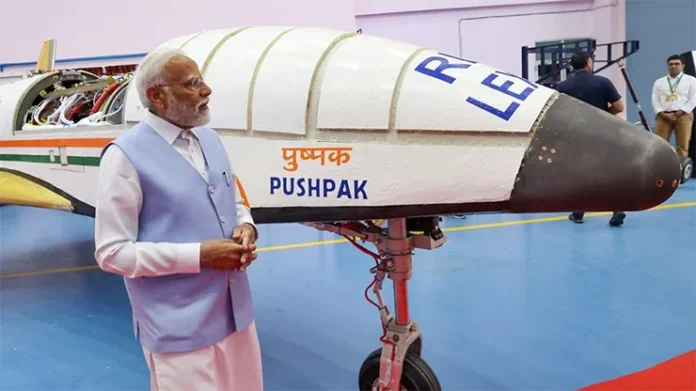Thiruvananthapuram: In its bold attempt to enter the reusable rocket segment, India’s sleek and winged rocket will take its experimental flight at a defence airfield in Karnataka on March 22, 2024.
The rocket, named “Pushpak’’ will be launched at 7 am, March 22 from the Chalakere Runway. The current experiment is the third flight of Pushpak – all part of a test of its robotic landing ability in more complicated circumstances.
“The Pushpak launch vehicle is India’s bold attempt to make access to space most affordable. It is India’s futuristic Reusable Launch Vehicle, where the most expensive part, the upper stage, which houses all the expensive electronics, is made reusable by bringing it back safely back to Earth. Later, it could even do refuelling of in-orbit satellites or retrieving satellites from orbit for refurbishment. India seeks to minimise space debris and Pushpak is one step towards that as well,” said S Somanath, Chairman, Indian Space Research Organisation (ISRO).
In 2016, the Reusable Launch Vehicle (RLV), in making for a decade, flew for the first time from Sriharikota and successfully landed on a virtual runway in the Bay of Bengal. As planned, it sank into the sea and was never recovered.
On April 2, 2023, a second test was successfully conducted at the Chitradurga Aeronautical Test Range of the defence establishment. The winged rocket, called the RLV-LEX, was hoisted into the air by an Indian Air Force (IAF) Chinook Helicopter, slung on its under-carriage and then dropped to land in an autonomous landing, which went off without a hitch.
According to ISRO Chairman Somanath, the “Pushpak Viman” is India’s legendary spaceship named in the Ramayana, known to be the vehicle of the Lord of Wealth, God Kuber. So it is appropriate to name India’s most audacious 21st Century rocket as Pushpak. “It is expected that in times to come, it could be a money spinner for India when it becomes a commercially available launcher,’ he added.
“Pushpak is the future. ISRO has an objective to fly a vehicle that is more cost-effective and provides very low-cost access to space,” said Sunil P, Program Director, Advanced Technology & Systems Group, Vikram Sarabhai Space Centre.
Having thought of building its own version of the space shuttle over 15 years ago, India plunged into making RLV a reality ten years ago with a dedicated team of engineers and scientists. The 6.5-meter aeroplane-like space craft weighs 1.75 tons and will be hoisted aboard an IAF helicopter. During the descent, a phase which is essentially a glider-like event, small thrusters will help the vehicle navigate to the exact spot where it is supposed to land.
Over Rs 100 crore has been invested in the project by the government, which is a milestone as the country moves towards making its own space station – the Bhartiya Antariksha Station by 2035.





